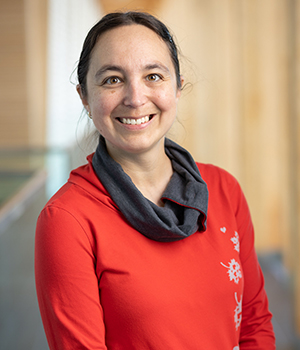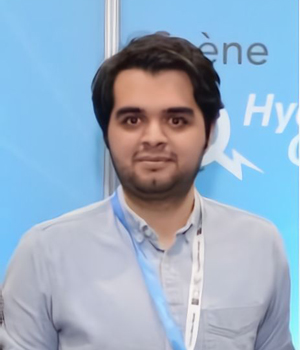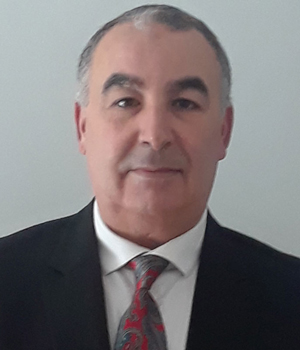Back to program
Integrating Environmental Aspects Throughout the Mineral Development Process
Tuesday, November 21, 2023
Room 301B - SOQUEM
In order to promote the harmonious development of mining activities, which is based on a better reconciliation of land use and a greater social acceptability, the Ministère des Ressources naturelles et des Forêts (MRNF) has identified as an issue the supervision of this industry to better protect the environment. This session will look at how R&D can contribute to resolving this issue by developing innovative technological solutions that integrate environmental aspects into each of the major stages of the mineral development process, i.e., during 1) geoscientific surveys, 2) exploration, 3) development, construction, commissioning and running in, 4) extraction, and 5) mine site restoration, monitoring and maintenance.
9:30 a.m.
Welcome Address
10:05 a.m.
Geoenvironmental Models: Tools for Responsible Mine Tailings Management
Conference details
Mine tailings represent an environmental hazard due to the large volumes produced and their mineralogical, chemical and hydrogeological properties, from mine operation through to the post-restoration phase. The main challenge associated with mine tailings is acid mine drainage (AMD), but contaminated neutral drainage (CND) from dissolved metals is also problematic. Tools are available to predict these environmental risks, such as static and kinetic tests to determine acid-generating potential. However, these tests can require significant quantities of mine rejects, from a few hundred grams to several kilograms, which are often not available during the early stages of a mining project. Indeed, environmental assessments must be carried out prior to mine construction, when waste rock and concentrator reject samples are not readily available. Geoenvironmental modelling has recently been developed to provide a link between exploration data and environmental assessments, and can also be useful in examining mine tailings management scenarios. This presentation will demonstrate a 4-step geoenvironmental characterization protocol, developed by Vermette in 2018, that identifies the information that can be obtained from exploration and development data used to predict AMD and CND risks from mine tailings. For each step of the protocol, examples drawn from research work carried out at IRME-UQAT will be provided to illustrate the applications and information obtained. The first stage consists of a preliminary environmental risk assessment based on observations and rapid, non-destructive testing of drill cores. The second stage involves the definition of geoenvironmental domains and typical AMD prediction tests required for pre-feasibility studies. The third stage corresponds to more detailed assessments of geochemical behavior, which will enable management options for future mine tailings to be considered. The final stage of the geoenvironmental characterization protocol involves spatial visualization of the environmental properties of the ore and hydrogeochemical information of the waste rock and mill tailings that will be produced under the different management scenarios. Finally, the advantages and limitations of geoenvironmental modeling will be presented.
10:45 a.m.
Merging artificial intelligence with automated core scanning to predict geoenvironmental parameters
Conference details
Authors: Ehsan Vosoughi, Benoît Plante, Isabelle Demers, Marc Legault (UQAT), Raphaël Mermillod-Blondin (AEM) and Aurélie Chopard (AEM)
The process of developing a mine is a lengthy endeavor, spanning a minimum of five to ten years from the initial discovery to the exploitation of a deposit. However, the timeline for mine development is heavily contingent on several factors, including the geological, metallurgical, and environmental complexity of the site, as well as the project’s social acceptance. As mining progresses through its various stages, especially in the realm of mine tailings management, inherent risks are ever-present, prompting the mining industry to continually work on risk mitigation strategies. Addressing these challenges necessitates the adoption of effective mining waste management approaches, such as comprehensive geoenvironmental characterization throughout the deposit assessment process.
The assessment of geoenvironmental parameters and the creation of 3D geoenvironmental block models involve conducting environmental laboratory tests. However, generating detailed and accurate 3D geoenvironmental block models demands a substantial volume of data that cannot be solely derived from laboratory results due to their cost and time constraints. In recent years, there has been a growing trend in the mining industry towards integrating automated core scanning data with artificial intelligence (AI) techniques. This integration aims to enhance the identification and mapping of mineralogy and textures encountered in drill cores and relating them to the environmental laboratory tests. This fusion of methods can be extended to a new frontier in the mining sector, where it can characterize the geoenvironmental behavior of geological deposits at high spatial resolution, thus mitigating the inherent limitations of traditional approaches to creating 3D geoenvironmental block models.
In collaboration with partners, Agnico Eagle Mines and the Ministère des Ressources Naturelles et des Forêts, this project's objective is to develop an innovative methodology for predicting the geoenvironmental characteristics of geological deposits. This objective will be realized by integrating data collected through core scanning techniques, including hyperspectral imaging (HSI), laser-induced plasma optical emission spectrometry (LIBS), and X-ray fluorescence spectrometry (XRF), with AI methodologies. The output of this project will be a 3D predictive block model encompassing various geoenvironmental parameters, with a primary focus on the potential for acid generation and metal leaching. This predictive block model will serve as a robust tool for assessing the environmental behavior of a deposit even before commencing mining operations, aiding in the selection of the optimal approach for managing mining waste. These assessments will enable the mining industry to proactively address potential environmental concerns that may arise from the generation of mining waste.
11:10 a.m.
Evaluation of the Potential Uses of Abitibi Clay Formations in Mining Structures as Construction Materials
11:35 a.m.
Reprocessing Mine Tailings: A Solution for Maximizing Mineral Resource Development and Reducing Environmental Impact?
Conference details
The mining industry is a major contributor to the Quebec economy, producing raw materials essential to our industries and society. However, the exploitation of mineral resources generates significant quantities of solid and liquid waste that can have an impact on the environment. Responsible management of solid waste is one of the mining industry's biggest challenges, due to geotechnical (i.e. jetty failure) and geochemical (mine drainage generation) risks. Consequently, reducing the volumes of potentially problematic waste to be disposed of on mine sites is a priority for the government, the mining industry and neighbouring communities alike.
The reprocessing of mining waste using metallurgical processes (i.e., gravity separation, flotation, (bio-)hydrometallurgical processes) represents a promising solution for reducing the volume of problematic waste to be managed on site (i.e., separation or immobilization of problematic elements), while maximizing the exploitation of mineral resources (i.e., potential recovery of value-added elements). Waste reprocessing processes exist, notably to separate problematic sulphide minerals (i.e., environmental desulphurization) or recover precious metals (i.e., biohydrometallurgy), with performance often dependent on the study location.
As part of our research, we are developing processes for reprocessing mine tailings in order to: i) reduce the mobility of problematic As present in desulphurized and filtered tailings, and ii) promote the recovery of precious, critical and strategic metals present in sulphide concentrates from environmental desulphurization, "aged" mine tailings or metallurgical tailings. The results of several case studies will be presented in order to better document the possible reprocessing routes depending on the study location, as well as the advantages and limitations of waste reprocessing.




